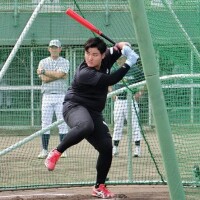ウクライナ侵攻で核シェルターに再注目 スイス
 【AFP=時事】ロシアのウクライナ侵攻を受け、スイスでは冷戦時代に造られた核シェルターへの関心が再び高まっている。(写真はスイス・ジュネーブ郊外メイランの集合住宅地下にある核シェルターの備品のバイオトイレ)
【AFP=時事】ロシアのウクライナ侵攻を受け、スイスでは冷戦時代に造られた核シェルターへの関心が再び高まっている。(写真はスイス・ジュネーブ郊外メイランの集合住宅地下にある核シェルターの備品のバイオトイレ)1960年代以降、スイスの全自治体には住民のための核シェルター建設が義務付けられている。また一定規模以上の戸建てや集合住宅を建てる場合にも、同様に核シェルターを設置しなければならない。スイスの総人口860万人に対し、確保されているスペースは約900万人分。官民合わせて36万5000か所にシェルターがある。
核シェルターは、チョコレートや銀行、高級時計と並ぶスイスのトレードマークの一つで、これまでは倉庫やワインセラーとして使われてきた。ところが、ロシアがウクライナに侵攻した2月24日以降、本来の役割を見直す動きが起きている。
ロシアのウラジーミル・プーチン大統領は侵攻開始から数日後、核抑止力部隊を厳戒態勢に移行するよう命令し、世界に警戒感が広がった。
さらに、1986年に史上最悪の原発事故を起こしたチョルノービリ(チェルノブイリ)原発付近をはじめ、ウクライナの原発周辺における激しい戦闘によって、永世中立国のスイスでもウクライナ侵攻の影響を受けるのではないかとの懸念が高まっている。
ジュネーブの国防・市民防衛当局トップ、ニコラ・スキラッチ氏は同市郊外メイランで、新築集合住宅の地下シェルターを案内しながら、「衝撃波や空気中の放射性物質から」住民を守るのに役立つとAFPに語った。
約150人用のシェルターは普段は倉庫になっているが、排せつ物を微生物によって分解・処理するバイオトイレや、組み立て式簡易ベッド、外気ろ過システムなどが備わっている。「非常口とメイン出口にエアロックがあり、カプセルのようになっています」とスキラッチ氏。「建物が崩壊しても、シェルターには影響はありません」
これまでスイスで核シェルターへの避難命令が実際に出されたことは一度もない。専門家は、シェルター使用の必要性が最も高いのは、国内で原発事故が起きた場合だと指摘している。
しかし、ウクライナ侵攻を受け、「市民からはシェルターに関する質問が数多く寄せられている」とスキラッチ氏は言う。
専門家は、実際の核兵器攻撃に対するシェルターの保護レベルは、攻撃の強度と攻撃地点からの距離に大きく左右されると警告している。
スイス国防省の報道官はAFPに対し、「核シェルターあれば、市民を放射性物質から一時的にはある程度守れる」が、「大規模な核戦争となれば大惨事となり、どの国もその影響を免れることはできないだろう」と述べた。【翻訳編集AFPBBNews】
〔AFP=時事〕(2022/04/19-08:10)
Swiss Cold War bunkers back in vogue as Ukraine conflict rages

Russia's invasion of Ukraine has reawakened interest in Switzerland's concrete nuclear fallout shelters, built during the Cold War with enough space to shelter everyone in the country.
Since the 1960s, every Swiss municipality has had to build nuclear bunkers for their residents, while such shelters have also been mandatory in all homes and residential buildings over a certain size built since then.
The shelters have become an integral part of the Swiss identity, on a par with the country's famous chocolate, banks and watches.
But the underground spaces, long seen as a quirky curiosity mostly used for storage or as very well-protected wine cellars, are being viewed in a new light since Russia invaded Ukraine on February 24.
Just days into the attack, Russian President Vladimir Putin put the country's strategic nuclear forces on high alert, sparking global alarm.
Fierce fighting near Ukraine's nuclear power plants, including Chernobyl -- the sight of the world's worst nuclear accident in 1986 -- have also heightened fears that even traditionally neutral Switzerland could be affected by the war.
- 'Ukraine is very nearby' -
People are discovering that Ukraine is very nearby, Marie Claude Noth-Ecoeur, who heads civil and military security services in the mountainous southern Wallis region, told AFP.
The wealthy Alpine country has pledged that each and every resident will have a shelter space if needed.
In fact, the country of 8.6 million people counts nearly nine million spaces across 365,000 private and public shelters.
But while there are more than enough spots at a national level, there are vast regional differences.
Geneva is worst off, with only enough places for 75 percent of its population.
Nicola Squillaci, head of Geneva's civil protection and military affairs division, said the shelters were conceived to provide protection especially in the case of a bombing and a nuclear attack.
They would help protect the population against the shock waves, and against radioactivity in the air, he told AFP.
Ducking into a private shelter for around 150 people, underneath a brand new residential building in the Geneva suburb of Meyrin, Squillaci pointed out how, in peace time, it was equipped with basement storage units for the apartment dwellers above.
But unlike most storage facilities, this one comes with composting toilets, kits for quickly assembling beds, and a ventilation system that filters the air coming in from the outside.
- 'Capsule' -
It is like a capsule, with airlocks on emergency exits and main exits, Squillaci said.
If the building were to collapse, the shelter would remain intact.
Switzerland's vast network of nuclear bunkers have a range of other day-to-day uses, including as military barracks or as temporary accommodation for asylum seekers.
But Swiss authorities require that they can be emptied and reverted back to nuclear shelters within five days.
So far, Switzerland's population has never been ordered down into the shelters, not even in the wake of the Chernobyl disaster.
Experts say the most likely scenario for needing to use them has always been a possible accident at one of Switzerland's own nuclear power plants.
But now the conflict raging in Ukraine has added a new, urgent layer to the national nuclear anxiety.
With public concern growing, Swiss authorities have published overviews of the available shelter spots, and have urged households to always maintain a stock of food to last at least a week.
With Ukraine, the geopolitical situation has altered the paradigms a bit, Squillaci said, adding that authorities were receiving enormous numbers of legitimate questions from citizens.
A number of property owners who previously sought to pay a fine rather than build bunkers were also backtracking, he said.
- 'Temporary protection' -
To compensate for the lack of shelters under chalets and other traditional mountain homes, Alpine cantons like Wallis meanwhile rely heavily on large collective bunkers.
In Evionnaz, a municipality with around 1,000 inhabitants, the collective shelter can accommodate around 700 people, counting 15 dormitories filled with row after row of three-storey bunk beds.
The country asks us to be on the ready, Noth-Ecoeur said.
Today we are in a preparatory phase, and we are ready to put the shelters to use.
Experts caution though that the level of protection provided by the shelters in the case of actual nuclear weapons use would depend heavily on the intensity and proximity of the strikes.
The shelters could offer the population a certain level of temporary protection against radioactive events, Swiss defence ministry spokesman Andreas Bucher told AFP.
A large-scale nuclear war would however be catastrophic, and no state would be able to guard against the effects.

最新ニュース
-
スリランカと経済協力確認=中国主席、北京で首脳会談
-
毛寧氏、報道局長に昇格=中国外務省
-
野田、2年目は新チームから=自動車Sフォーミュラ
-
弁護士入れ、事実関係調査=中居さん巡る報道で―フジテレビ
-
独、2年連続のマイナス成長=24年GDP、0.2%減
写真特集
-
【高校通算140本塁打の強打者】佐々木麟太郎
-
【駅伝】第101回箱根駅伝〔2025〕
-
【野球】慶応大の4番打者・清原正吾
-
【競馬】女性騎手・藤田菜七子
-
日本人メダリスト〔パリパラリンピック〕
-
【近代五種】佐藤大宗〔パリ五輪〕
-
【アーティスティックスイミング】日本代表〔パリ五輪〕
-
【ゴルフ】山下美夢有〔パリ五輪〕
















